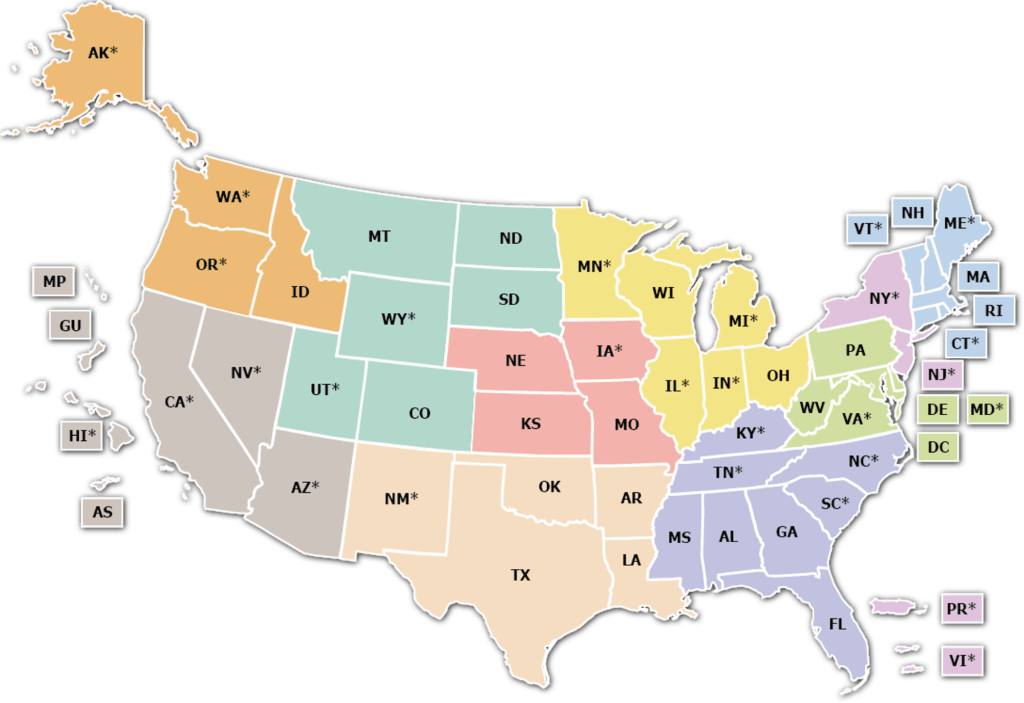In 1970, the Occupational Safety & Health Administration (OSHA) passed a law called the Occupational Safety & Health (OSH) Act. If your company is covered by the OSH Act, you’re required to display the OSHA Job Safety and Health: It’s the Law posting in a conspicuous place. The posting is included in Poster Compliance Center’s Federal Labor Law Poster. If you operate a business in a state or U.S. territory with its own OSHA-approved plan, your State Labor Law Poster from Poster Compliance Center will include the mandatory state OSHA posting information.
The consequences of noncompliance with OSHA laws can include [substantial fines] and other penalties, but with our federal and state labor law posters, you can rest easy knowing you’re fully compliant.
OSHA Regions

*States and territories with a local OSHA plan
